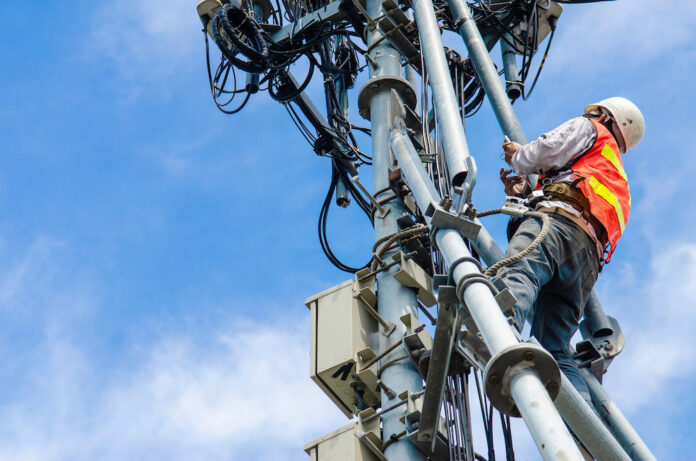2024 is predicted to be less bad, while the contrast with the data centre equipment market is striking
Two recent reports by Dell’Oro demonstrate the diverging trajectories of the telecoms equipment and data centre equipment markets. The market analysts said that after five consecutive years of growth and stable trends in 1H23, the pendulum swung rapidly towards the negative in the second half of the year.
Their preliminary findings suggest that worldwide telecom equipment revenues across the six telecom programmes they track – Broadband Access, Microwave & Optical Transport, Mobile Core Network (MCN), Radio Access Network (RAN), and SP Router & Switch – declined 5% year-over-year (YoY) for the full year 2023, performing worse than expected.
This week Dell’Oro also revealed that the Data Centre Physical Infrastructure (DCPI) revenue growth maintained double-digit year-over-year (YoY) growth despite continuing to decelerate in 4Q 2023. This capped off a record year of 16 percent revenue growth. There is an irony there for telcos and telco equipment manufacturers (TEMs) which bailed from the data segment because they thought it was being commoditised.
On the TEM front, author and VP RAN and telecom Stefan Pongratz, points the finger at glacial 5G SA rollouts coupled with advanced 5G markets with higher 5G population causing steep declines in wireless-based investments. This capex deceleration was not confined to the RAN and MCN segments. Following a couple of years of robust PON investments, operators curtailed their home broadband capex as well. “This reduction was more than enough to offset positive developments with optical transport and SP routers,” he said.
The least surprising news was that North America subsided faster than expected. “Initial readings show that the aggregate telecom equipment market dropped by roughly a fifth in the North America region, underpinned by weak activity in both RAN and Broadband Access,” said Pongratz. On the bright side, regional dynamics were more favourable outside of the US. Our assessment is that worldwide revenues excluding North America advanced in 2023, as positive developments in the Asia Pacific region were mostly sufficient to offset weaker growth across Europe.
Huawei leading the pack
And one big winner from this switch to non-US revenue has been Huawei despite efforts by the US government to limit its addressable market and access to the latest silicon. Huawei still maintains its position as the global telecom equipment leader and Dell’Oro believes its lead widened in 2023, in part because its limited exposure to the North America region was a benefit in 2023 on a relative basis.
Other supplier rankings were mostly unchanged; however, vendor revenue shares shifted slightly in 2023. Still, the overall concentration has not changed – the top 7 suppliers accounted for around 80% of the overall market.
Pongratz said market conditions were expected to remain challenging in 2024, though the decline is projected to be less severe than in 2023. The analyst team is collectively forecasting global telecom equipment revenues to contract between 0 to -5% in 2024. “Risks are broadly balanced,” he said. “In addition to currency fluctuations, economic uncertainty, and inventory normalization, there are multiple regions/technology segments that are operating in a non-steady state.”
DC market booming even before AI impacts fully
In contrast to struggling TEMs, Dell’Oro research director Lucas Beran said that after covering the DCPI market for a decade, 2023 marked the highest year of revenue growth he’d observed. “This growth was primarily the result of vendors fulfilling pandemic induced backlogs delayed by supply chain constraints, with a marginal contribution from sales linked to AI workloads.” He pointed out that as DCs take 18-24 months to be built, given all the commitments to AI by, frankly everybody, we’re not even seeing that impact appearing until the second half of 2024
“In my nearly decade-long coverage of the DCPI market, 2023 marked the highest year of revenue growth I’ve observed. This growth was primarily the result of vendors fulfilling pandemic induced backlogs delayed by supply chain constraints, with a marginal contribution from sales linked to AI workloads,” said Lucas Beran, Research Director at Dell’Oro Group. “This is because building new data centre facilities generally takes 18 – 24 months, and new purpose-built facilities to support AI workloads are expected to start materializing in the second half of 2024.
“Evidence indicates that these deployments are nearing. Vertiv, the market share leader in data centre thermal management, secured its first quarter of notable liquid cooling deployments, which is correlated to higher TDP processors associated with accelerated computing,” he said. “This is only the beginning, as Vertiv plans to increase liquid cooling manufacturing capacity by 45 times in 2024.”
Demonstrating the emerging impact of AI on DCs, the bifurcation in hardware sales became more prominent in 4Q 2023, with product growth such as single-phase UPS, IT racks and rack power distribution notably slowing. Larger system sales, such as Three-phase UPS, Thermal Management and Facility Power Distribution grew at much faster rates.



